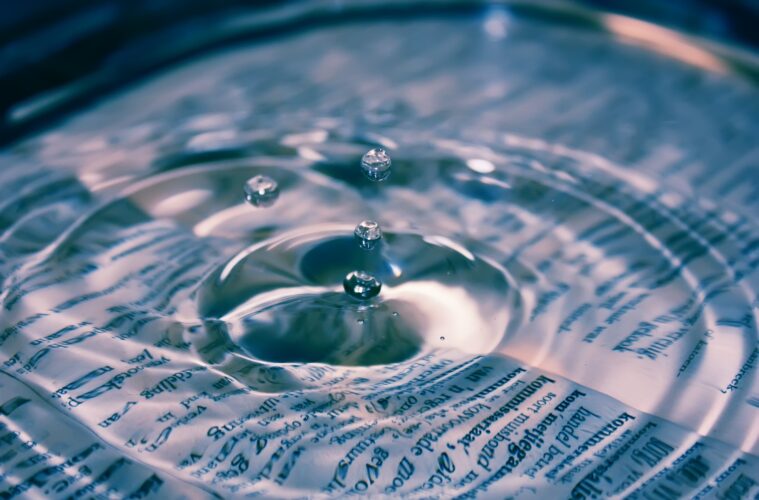We will lose nearly 2 million lives this year due to gastrointestinal diseases.
What is the main cause of this? Water pollution.
We use water in our everyday lives. But with the current state of water pollution, the water we are using might not be safe to use at all. This is why consumers focus on getting the cleanest drinking water available.
But how many of us are aware that we should not stop at clean drinking water?
WHAT ABOUT IT?
It is a common misconception that having clean drinking water is sufficient for us not to get any waterborne illnesses. That is why the quality of water used in bathrooms and other parts of the house gets neglected, usually. But it should be clean, too!
The water is not ingested so why would it be a problem? Well, there are other ways that impurities or toxins might get to you. The water we use for our daily cleaning rituals should be as safe as the water we drink.
HOW YOU GROOMIN’?
We groom ourselves every day – taking a bath, shaving, cleaning nails, and wearing clean clothes. We do this to keep our bodies clean, prevent the spread of disease, and be presentable to others. I mean, many people spend hours grooming themselves.
All these practices require water. Thus, exposing our bodies to contaminated water can have consequences, serious consequences.
HOW CAN IT GET TO ME?
Exposure to contaminated water can affect you greatly. These are some of the ways contaminants can get to you.
- Through the skin – The largest organ in the human body that is made out of tiny pores. These pores can absorb and can be penetrated by contaminants especially when you have an open wound. Impurities present in the water can also be unconsciously inhaled once it turns into vapor whenever you take a hot shower.
- Through the eyes – Next to skin, our eyes are most vulnerable to contamination. Eyes are very sensitive. They tear up or turn reddish when something is not right.
- Through the nose – Be careful what you breathe in. Even mists and steam from saunas can contain harmful diseases. Are you sure you can trust the water from your favorite spa?
- Through the mouth – This is the most common way for diseases to enter our body. The next time you brush your teeth, think about all the microorganisms or contaminants you can’t see. Are you certain what you put in your mouth is clean?
WHAT’S COMING?
Contaminated water and poor hygiene increase the risk of getting diseases. According to the Centers for Disease Control and Prevention (CDC), approximately 3 billion people do not have the means to safely wash their hands while over 2 billion people do not have access to basic sanitation.
These are the terrible effects of contaminated water on human health:
- Bacterial diseases
- Diarrhea
- Cholera
- Typhoid
- Trachoma
- Encephalitis
- Viral diseases
- Hepatitis
- Polio
- Parasitic diseases
- Amoebiasis
- Schistosomiasis
- Intestinal Worms
- Dracunculiasis
- Toxic elements
- Lead Poisoning
- Fluorosis
- Arsenicosis
Findings of the CDC show that over 88% of deaths are associated with diarrhea due to contaminated water, poor sanitation, and a lack of hygiene.
DID YOU KNOW?
The World Health Organization (WHO) predicts that half of the world will experience water scarcity by 2025.
But don’t we have a lot of water? Yes.
Two-thirds of our planet’s surface is water but we can’t actually use most of it. Saltwater composes 97% of the Earth. It is mainly used for thermoelectric power-plants. It is possible for saltwater to be converted into drinking water but needs to go through a rigorous process that requires a lot of resources. Drinking it directly will make your kidney fail.
The remaining 3% is freshwater. Only 1% of that 3% are easily accessed from rivers, lakes, creaks, and streams. This is what we use for our day to day needs. The majority of the freshwater is frozen in the form of glaciers and ice caps while the rest can be found deeply underground.
This is why water is limited and why water pollution makes it even scarcer.
Did you know that in 2020, Wall Street listed water as the number one commodity together with gold and oil?
WHAT DO WE DO NOW?
You can see now how contaminated water affects everyone? So, how can we lessen our water footprint? It all starts with our day to day behavior.
We should start choosing wisely.
Many products are contaminated with chemicals and pesticides. Eating organic food helps lessen the chemicals that end up in our waters. Also, using organic cleaning products helps too! There are a lot of eco-friendly products available today.
What we do matters.
Proper disposal of toxic chemicals and materials is crucial. Look for community collection centers near you. Recycling and avoiding plastic also helps. There are global movements to reduce the use of plastics and instead use cloth bags.
Who we support can make a difference.
We need to do our research on the products we consume before purchasing them. We may be buying products from companies that do more harm to the environment than we realize. You can also join or fund organizations that help make a difference for the environment.
IN SICKNESS AND IN HEALTH
Without doubt, we are the greatest contributor to water pollution. On the bright side, we can also be the greatest solution! Changing regulations to protect our environment by limiting our water footprint would be a huge help. What we do individually and who we support can have a huge significance to everyone as we are all connected. Working together will leave a great impact in lessening water pollution. As J. Donne said, “No man is an island, entire of itself; every man is a piece of the continent, a part of the main”.


